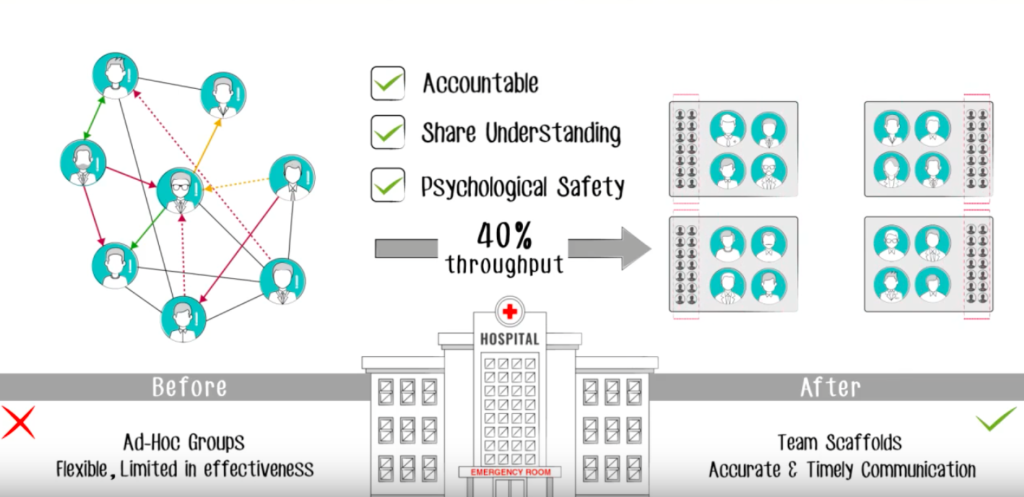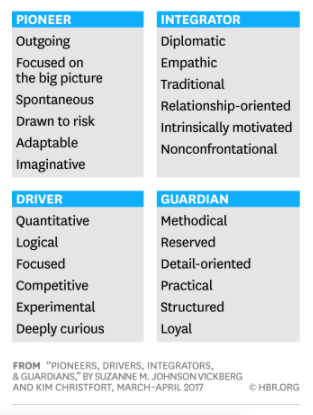It’s no secret that AI will change the job market. An estimated 10.5 million jobs are at “high risk” of getting replaced due to automation and new technology, and 80% of employees are concerned about job loss due to AI.
But instead of panicking, we should be adapting.

According to an Atlassian report, teamwork is the most important skill for the future workplace. This report found that “90% of companies are confronting problems so complex that teams are essential to solving them.” AI can replace a human in pure computing power or in data analysis, but it can’t replace the magic that happens when you and your team learn to work together and really trust each other.
So as technology advances, you and your team will have one very big challenge: to develop the kind of teamwork skills that AI can’t replace. Communication, coordination, and empathy among teams will only become more important as AI becomes a larger force in the tech industry. Let’s take a look at some different models for building solid teams, and how you can apply them.
1. Create Team Scaffolds
Stanford University and Harvard Business School professors Melissa Valentine and Amy C. Edmondson have been observing the healthcare industry for years, as it has experienced rapid changes in technology. What they have found is that as medicine and healthcare technology advance, the need for productive, fluid teams that can handle new people switching in and out on 24/7 schedules has never been greater.
Hospitals are often organized around discrete roles: emergency physician, scrub nurse, administrator. But an understanding of “who does what” is not enough to create teams that trust each other, communicate effectively and actively, and hold each other accountable to the highest quality of care.
Valentine and Edmondson write,
Told to form and act as teams, most clinicians will agree with the spirit of the request but will struggle to make it happen given well-documented challenges of communicating across shifts, expertise areas, or hierarchical levels… What is needed is fast-paced communication and coordination on the fly, among constantly shifting partners in care who don’t have the luxury of forming stable, well-bounded teams.
Valentine and Edmondson have developed a model of team scaffolds for doctors and nurses working on demanding, rotating schedules. Before, doctors and nurses would work ad hoc with any available nurse attending to a patient, passing off the chart to any available resident, who would then just leave the chart for whichever attending was on call at the moment.
With team scaffolding, teams are still fluid, but everyone is assigned to a “pod” that has one attending physician, a few residents, and three nurses all responsible for the same group of patients. Staggering shifts mean that the same doctors and nurses aren’t necessarily working closely together throughout the whole day. But because everyone knows who is responsible for which patients, the fluidity of the team is an asset, not a problem.

The result of this restructuring was that everyone learned to hold each other accountable and actively communicate and help each other.
Trust and accountability among team members don’t just happen overnight. You need to build these things carefully and intentionally. When you can get your team to a place of mutual trust, that’s an asset that can’t be replicated by technology.
Adapting Team Scaffolds to Your Workplace
- Make sure everyone knows who’s on the team and what they do. Each person on your team has a great understanding of what they do. Make sure they know everyone else’s role and responsibility as well.
- Have a conversation about shared goals. Make sure your team members don’t get siloed in their own to-do lists. Outlining the entire team’s goals and making them explicit helps bind everyone together around shared responsibility.
- Treat team scaffolding as an ongoing process. Be available to help your teammates work out the details, field questions, and refine the process.
2. Adapt Based on the Four Work Styles
According to social psychologist Dr. Suzanne Vickberg, the lack of teamwork at most companies isn’t the fault of the individual team members, but rather the fault of their managers. She says, “Some managers just don’t recognize how profound the differences between their people are; others don’t know how to manage the gaps and tensions or understand the costs of not doing so. As a result, some of the best ideas go unheard or unrealized, and performance suffers.”
Dr. Vickberg has observed struggling teams for years during her tenure as Principal Consultant and the Assessment Practice Lead at the Great Place to Work® Institute. Now, she’s teamed up with biological anthropologist Helen Fisher of Rutgers, who has worked on brain chemistry and how people interact in romantic relationships, and molecular biologist Lee Silver of Princeton, who has adapted statistical models used for genetic population analysis to look at different work styles in the business world.
Together they have developed a model for managers to improve teamwork at their organizations. This model classifies work styles into four types:
- Pioneers come up with imaginative ideas. They like to take risks and are optimistic about outcomes.
- Guardians bring order and structure. They’re risk-averse and pragmatic.
- Drivers get stuff done. They like to see results and tend to take a firm stance on decisions.
- Integrators bring people together. They care about getting people to agree and feel a responsibility to the group.
Rather than try to fit employees into an arbitrary workflow, design the roles and responsibilities around the work styles of team members. This will ensure everyone can work together in the way that they work best. A team that values the individual strengths of each member is going to be hard to replace with AI technology.
Applying the PGDI Model to Your Workplace
- Have employees qualify their work style by tallying up their traits. This forces team members to self-evaluate and recognize how they’re different from their peers.

- Have a team discussion about each team member’s work style. This gives team members a vocabulary for talking about their strengths and preferences.
- Adjust the workflow, so team members can leverage their strengths. Give team members responsibilities based on how they work.
- Manage different employees differently. Don’t take a one-size-fits-all approach, but rather adjust your style based on the strengths and weaknesses of each work style type. For example, teach pioneers to look for ways to support their crazy ideas with concrete evidence, so that their team members will sign onto it.
3. Practice Oracy and Put Value in Communication
Oftentimes, soft skills like communication and collaboration aren’t valued in the workplace—and in tech workplaces more specifically. But these are the skills that are going to be impossible for AI to replace: listening, empathizing and thoughtful communication.
At School21, an innovative grammar school in London, the curriculum is designed precisely around the soft skill of effective communication. They’ve designed a new model of teaching communication skills—Oracy.
Oracy is based on the belief that “teaching spoken word is more than giving students public speaking skills. It’s a process of critical self-reflection, continual growth, and rooted in the deep appreciation of collaboration and humans’ ability to connect with others.”
Oracy is measured in four strands, developed in partnership with Cambridge University researchers:
- Emotional: The ability to connect with an audience.
- Cognitive: The reasoning and rationale behind an argument.
- Physical: The control over voice and body language.
- Linguistic: The relationships of word and language choice.
School21 teaches their students more than rote memorization, grammar, and vocabulary. Oracy helps students to engage deeply with arguments and reasoning, listen deeply, and structure their own thoughts for an audience.
How to Use Oracy in Your Team
- Invite your teammates to give a talk about anything. Everyone has at least one topic that really gets them excited to talk about. Hold informal lunchtime talks where everyone on your team can share the things they’re passionate about and practice presentation skills.
- Make a video instead of sending an email. If you find yourself trying to answer a complicated question over email and you’re struggling to organize your thoughts on the screen, try making a video Explaining complicated instructions or concepts is often easier when you can give your answer out loud.

A weekly data update to keep your team in the loop
Don’t Be Underprepared for the Future of Work
“Collaboration” is a word we’ve been throwing around in the tech industry for the past decade. We work in a “collaborative environment,” we use “collaborative software,” and we build “collaborative relationships” with customers and clients. But as technology shifts, the skill is going to become much more than a buzzword— it’s going to be the determining factor in workers’ employability.
AI and advancements in automation will never be able to fully replace a team that works really well together and gets things done creatively.
P.S. If you liked this article, you should subscribe to our newsletter. We’ll email you a daily blog post with actionable and unconventional advice on how to work better.
